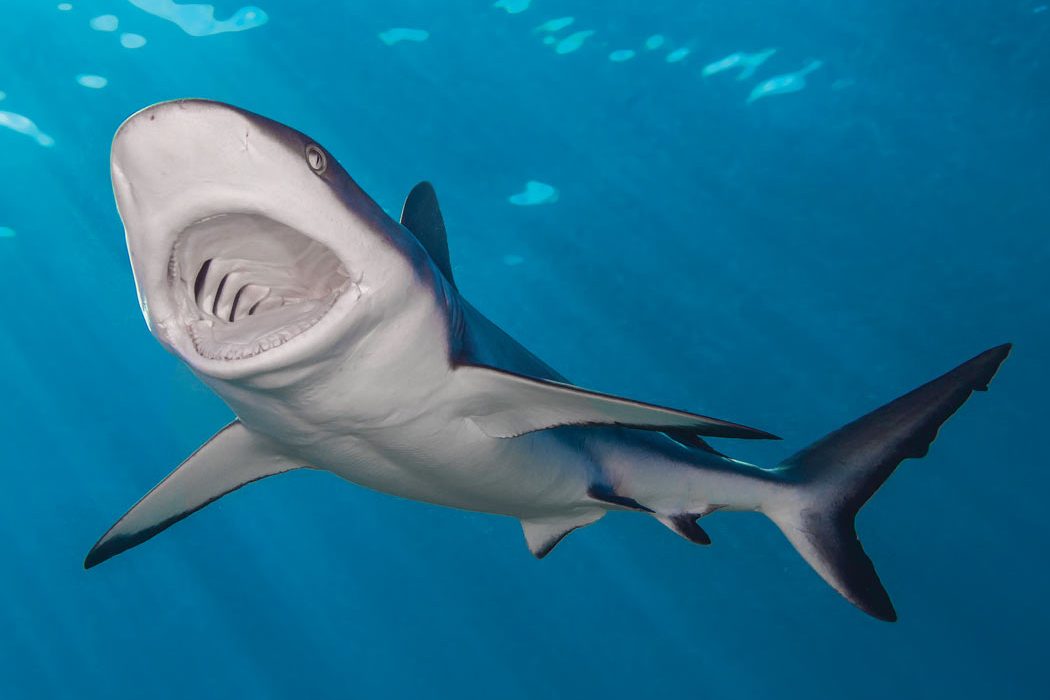One significant advantage of fisheye and other ultrawide-angle lenses is that it is often easy to get all the important elements in your frame in sharp focus. This is true even when using relatively wide apertures (e.g., f-4). But for subjects that are roughly 4-8 feet (1.2-2.4 m) long, like the gray reef shark pictured here, a lens with an extremely wide angle of view is usually not the lens of choice.
Lenses that provide fields of view narrower than ultrawide lenses often help to produce more pleasing results. That’s because these lenses make it easier to fill a pleasing percentage of your frame with your subject, especially with subjects that are often difficult to get right next to when you shoot.
However, if you are not careful about exactly where the lens is focusing, it is easy to get the face of an animal out of focus. This can happen with narrower lenses when the following factors come into play: (a) You are using a relatively wide aperture (e.g., f-4), (b) your lens is set to focus on a point or small area in the center of your frame, and (c) the subject’s face is closer to the lens than the elements in the center of the frame where the lens is set to focus.
Make sure you understand the focusing options your camera system provides. You also need to know how to quickly set the desired option. With my camera, I usually select a fairly large focusing zone in the center of my frame, and I “aim” the lens so that the center of the frame is on the approaching animal’s face. Once the auto-focus “locks,” I quickly recompose my frame and shoot without changing the focal plane.
Another viable option in some cameras is for the lens to focus on the closest element in the frame.
The focusing method to avoid is one that uses a singe point, or very small zone that is dead center in the frame, and then shooting without recomposing. If you don’t recompose when your subject’s face is “dead center” in your frame, there is often way too much empty space in front of your subject and the subject’s tail often gets “cut off.”
If you take the time to understand the focusing options provided by your camera and learn how to quickly set your camera on the desired option, you are sure to compose sharp, pleasing images.




